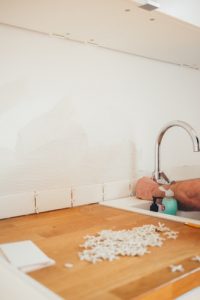3 Ways to Purchase a Rental Property
In this write-up I’ll briefly discuss 3 different approaches for financing a rental property, and the biggest issue clients face
It is assumed if someone is purchasing a rental property, they already own their primary residence. This is a second property purchase.
The biggest issue clients face when purchasing a rental property is ensuring their income will support the monthly payments required with operating two properties.
Yes, receiving rental income will help support the additional payments, but will it fully cover them? Every lender approaches rental income differently. Make sure you are working with a knowledgeable broker to maximize your rental income’s purchasing power.
Conventional Mortgage – 20%+ Down-Payment
Purchasing a rental property with a conventional mortgage (20% down-payments) will give you the greatest amount of flexibility in finding lenders with favorable rental programs. Conventional mortgages are not required by law to follow CMHC’s strict lending guidelines, thus creating opportunities for lenders to develop niches in the marketplace.
For example, some lenders aggressively target the condo market by removing monthly strata payments or property tax payments from the income-qualifying equation.
Slight variations between lenders, such as the one mentioned above, have a significant impact on your purchasing power. It is estimated for every $500 in monthly payments the stress test decreases your purchasing power by approximately $80,000.
Recently, some provincial lenders are aggressively growing their residential mortgage share by offering their own “relaxed” version of the stress-test.
Refinance Option
One of the easiest ways to purchase a rental property is by refinancing one’s primary residence to purchase the new property in an all-cash deal.
This option is straightforward, and can qualify the homeowner for their new mortgage by only adding their primary residence’s housing costs into the income-qualifying equation.
If adding rental income to the income-qualifying equation is necessary for the purchase, using the conventional mortgage option may be a better solution.
High-Ratio Mortgage – Less than 20% Down-Payment
Purchasing a property with less than a 20% down-payment is tricky, but do-able if you have solid income to support CMHC’s rigid lending guidelines.
High-ratio mortgages are designed for owner occupied properties. In order to perform this transaction requires you to move from your current property, and make the new property your principal residence.
So, what makes a high-ratio mortgage transaction involving a rental property more difficult to complete?
When income-qualifying a client for this type of transaction, we are required to follow CMHC’s “net-rental income” approach for adding rental income into the calculation. This equation is not favourable, and typically creates a negative net rental income which decreases the clients’ purchasing power.
“Net rental income = gross rents – operating expenses.”
To discuss any of these options in greater detail, please contact me at adamsale@dominionlending.ca, or by phone at 778-215-4121.
Thanks for reading!


